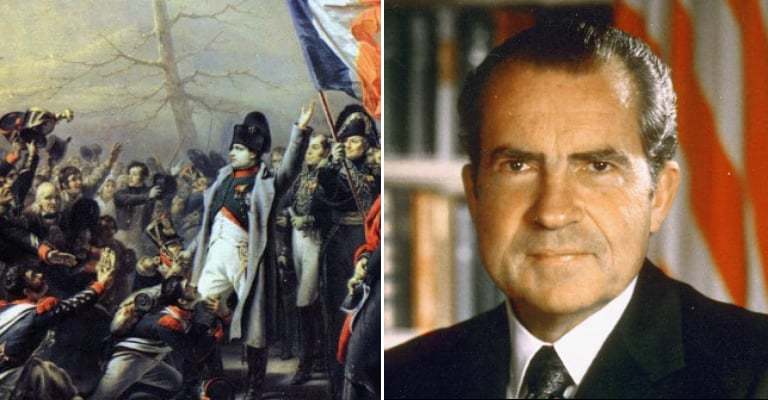Historical comebacks are relatively rare. In the ruthless world of politics, one slip-up can often be enough to derail a career entirely, with the voting public rarely forgiving and forgetting. And outside of the political circus, the world can be just as cruel. For centuries, rulers have known that, if they are deposed they run the risk of not just losing their positions of power but potentially their heads too!
However, sometimes historical figures have been granted a second chance. In many cases, a strong sense of self-belief has helped royals or politicians bounce back from oblivion. At other times, great comebacks have owed just as much to sheer good fortune as they have to cunning and tenacity. So, from American political giants who we might never have heard of had they not enjoyed great second acts, to kings and queens who never knew when to quit, here we have 10 of the greatest comebacks of all time:

Richard Nixon
The politician’s life is usually one of highs and lows. Dependent on public support, even the savviest politicians can fall out of favour and there are many instances of individuals running for – and winning – office after seemingly being down and out. But arguably nothing compares to the political comeback achieved by Richard Milhouse Nixon. It wasn’t a quick turnaround, but it was remarkable, not least since it ended with him sitting in the White House as the 37th President of the United States.
By the end of 1962, it seemed like Nixon had gone as far as he could politically. Fiercely ambitious, he had set his sights on the highest office in the land. And, he had certainly come close, being chosen as the Republican candidate for the Presidency in 1960. However, he was comprehensively defeated by JFK. His performances in the televised debates leading up to the election made him look old, flustered and evasive, especially when compared to the youthful, vibrant JFK. Then, when he was defeated in his bid to become Governor of California just two years later – a defeat he took badly, issuing an infamous ‘sore loser’ speech – it looked like Nixon’s hopes of great power were dashed for good.
However, this was not to be the case. The years after that 1962 election defeat are known as Nixon’s “wilderness years”. However, while he may not have been on the public scene, he was still plotting a comeback. With his family in tow, Nixon travelled through Europe, building important political and business connections. He shrewdly decided not to even try and go for the 1964 Presidential election, feeling that public sympathy was with the Democrats following JFK’s assassination. However, he campaigned tirelessly for Barry Goldwater. When Goldwater lost comprehensively, Nixon emerged unscathed and with the goodwill of the Republican party behind him once again.
By the end of 1967, Nixon’s mind was made up: he would go for the top job for a second time. Presenting himself as a figure of stability and appealing to the “silent majority” of Americans who were socially conservative and suspicious of the hippy culture, he won the nomination. He went on the offensive against President Johnson and, in a three-way race, he came out on top. Nixon was sworn is as President on 20 January 1969 and would go on to win a second election.
Infamously, however, his second term in office was cut short. The Watergate Scandal forced him to resign the office. While he was pardoned by President Gerald Ford, this was one low Nixon could not come back from, even if he did spend his later years rehabilitating his image by traveling extensively and offering his advice on matters of foreign affairs. Nixon died in 1994 at the age of 81.

